
Ice in the ocean – my historical photos
Ice formation in the ocean – using my own photos to tell the story.
Recently I talked about using my own photo to explain the generation of wind-generated waves to students. And then I realized that there is another set of photos that I have been using for teaching purposes for years that I could share here, too. Those are photos that I took on my very first “real” (as in “not a student, but participating in real research”) cruise back in 2003. In a time when pictures were still analog and you could take 36 pictures and then you had to change to a new film if you had planned ahead and brought one. I think I brought 6 films on the one-month cruise. It seemed excessive at the time, and today I easily take that amount of pictures in a day, especially when at sea and in the ice.
Anyway, let’s talk about the ice.
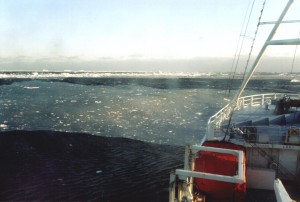
Newly forming ice in the front, older ice in the back.
In the picture above you see several different kinds of ice: Older ice that looks like what you would imagine ice to look like in the back towards the horizon, and newly forming ice between the old ice and the ship. The ice has only just started freezing and forms a slush at the ocean’s surface that dampens out wave movement. In places, pancake ice is starting to form.
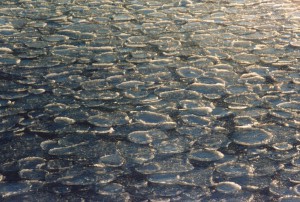
Pancake ice.
Pancake ice are almost round pieces of ice that are formed when slush freezes together. Since there is still some wave action in the water, the little ice plates bump into each other, forming a little puffy rim. Pancakes typically have a sizes ranging from the palm of your hand to maybe half a meter.
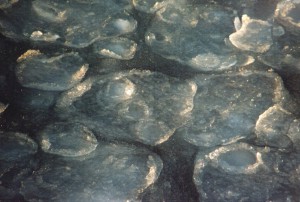
Several of the pancakes frozen together to form larger ice floes.
If the sea state isn’t too rough and the cooling continues, several of the pancakes freeze together to form larger ice floes.
Eventually, pancakes freeze together to form a closed surface.
If cooling persists, the sea ice cover thickens gradually, and snow falls on the surface.
I was so lucky to see all of these different stages of ice on my very first research cruise! And I was even luckier – in this year’s GEOF332 “field course in oceanography”, I got to show pancake ice to my students, in Hardanger fjord in February! Granted, the pancakes were really thin and we never got to see a closed sea ice cover, but what an awesome first day for a student cruise!
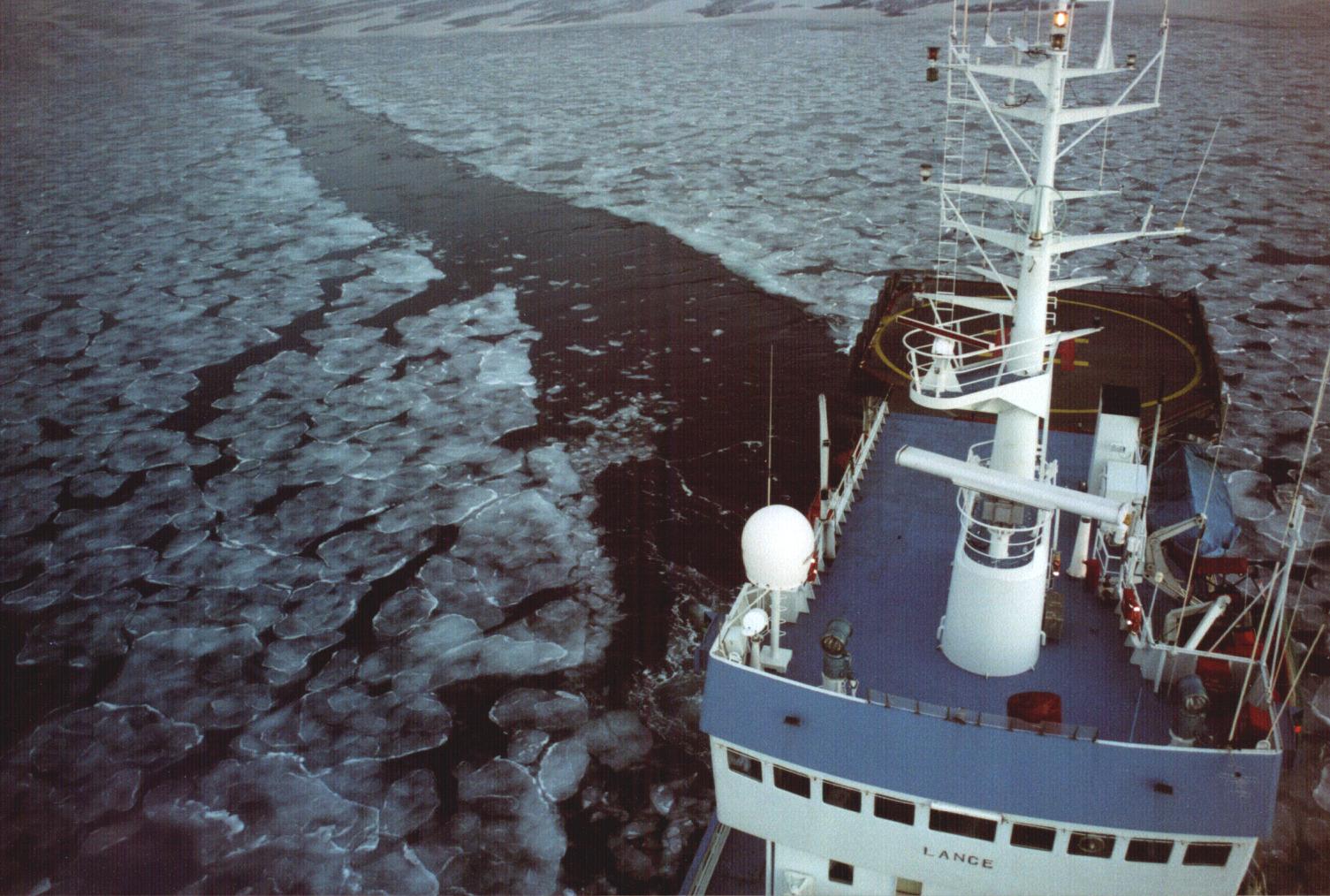
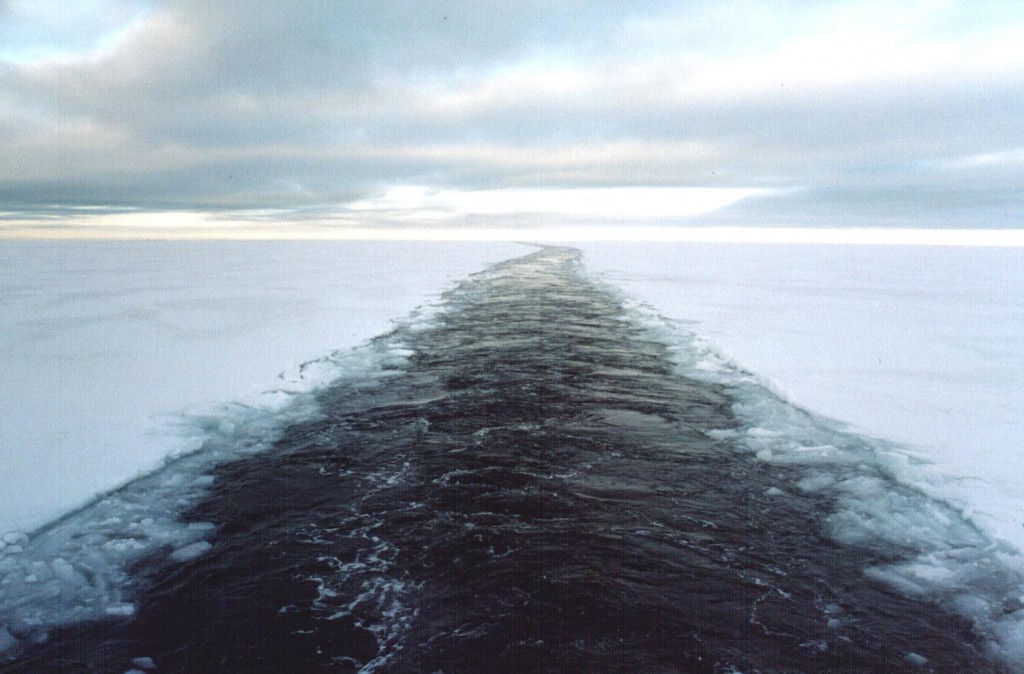

Early stages of ice formation | says:
[…] I was showing my ice formation pictures the other day (also in this post), I realized that even though I talk about ice forming needles first, I had never actually taken […]
Ice forming on Kiel fjord | Mirjam S. Glessmer says:
[…] One thing I really like is watching ice form. Well, maybe not watching the actual freezing (don’t have the attention span for that) but looking at all the different stages. […]